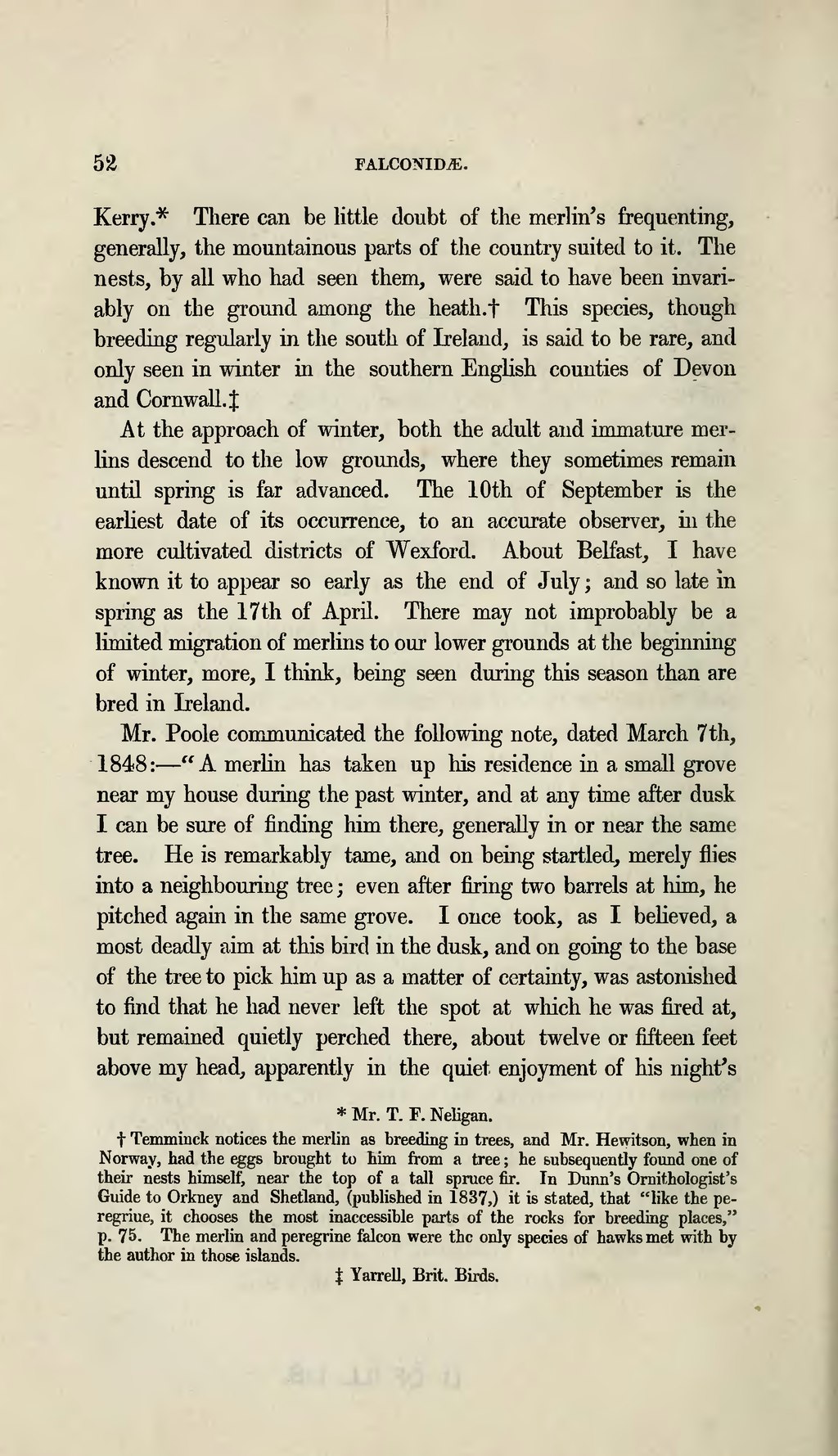Kerry .* There can be little doubt of the merlin's frequenting, generally, the mountainous parts of the country suited to it. The nests, by all who had seen them, were said to have been invari- ably on the ground among the heath.f This species, though breeding regularly in the south of Ireland, is said to be rare, and only seen in winter in the southern English counties of Devon and Cornwall. J
At the approach of winter, both the adult and immature mer- lins descend to the low grounds, where they sometimes remain until spring is far advanced. The 10th of September is the earliest date of its occurrence, to an accurate observer, in the more cultivated districts of Wexford. About Belfast, I have known it to appear so early as the end of July ; and so late in spring as the 17th of April. There may not improbably be a limited migration of merlins to our lower grounds at the beginning of winter, more, I think, being seen during this season than are bred in Ireland.
Mr. Poole communicated the following note, dated March 7 th, 1848: — "A merlin has taken up his residence in a small grove near my house during the past winter, and at any time after dusk I can be sure of finding him there, generally in or near the same tree. He is remarkably tame, and on being startled, merely flies into a neighbouring tree ; even after firing two barrels at him, he pitched again in the same grove. I once took, as I believed, a most deadly aim at this bird in the dusk, and on going to the base of the tree to pick him up as a matter of certainty, was astonished to find that he had never left the spot at which he was fired at, but remained quietly perched there, about twelve or fifteen feet above my head, apparently in the quiet enjoyment of his night's
Mr. T.F. Neligan.
t Temminck notices the merlin as breeding in trees, and Mr. Hewitson, when in Norway, had the eggs brought to him from a tree ; he subsequently found one of their nests himself, near the top of a tall spruce fir. In Dunn's Ornithologist's Guide to Orkney and Shetland, (published in 1837,) it is stated, that "like the pe- regrine, it chooses the most inaccessible parts of the rocks for breeding places," p. 75. The merlin and peregrine falcon were the only species of hawks met with by the author in those islands.
X Yarrell, Brit. Birds.
